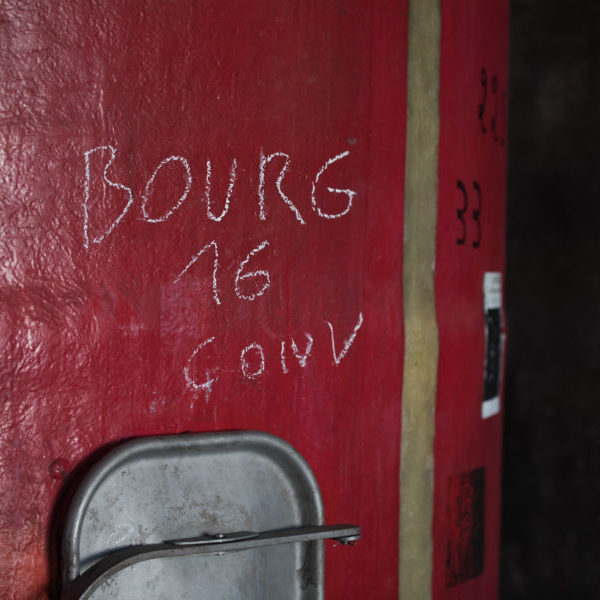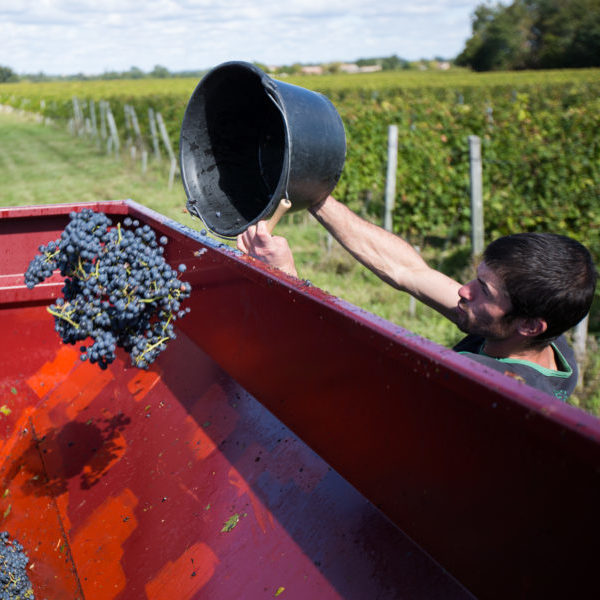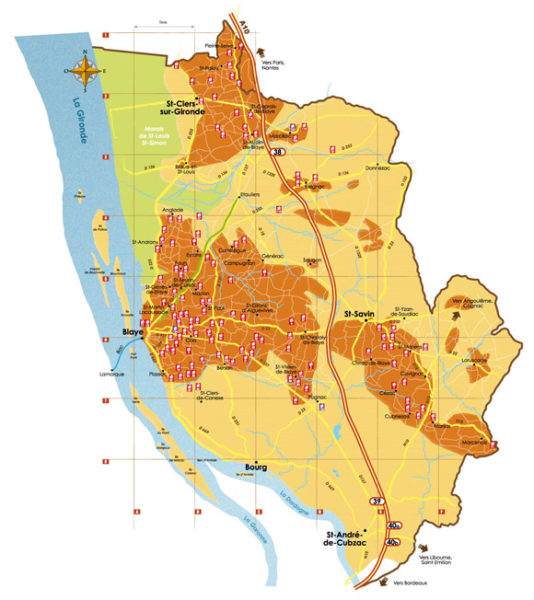Château Moulin de Rioucreux
Blaye Côtes de Bordeaux
The parcels of the Moulin de Rioucreux are located in the commune of Saint-Christoly-de-Blaye in the area of Saint-Savin. The vineyard covers 16 hectares of Bordeaux AOC (white, rosé) and Blaye Côtes de Bordeaux, with three types of terroirs: clayey, clay-limestone and sandy-clay. The vines are 15% white and 85% red.
For the white grappes, we work with 28-year-old Sauvignon gris and 4-year-old Sauvignon blanc vines. Château Moulin de Rioucreux's dry whites are very fruity wines, with citrus fruits, quite fat on the palate, atypical because of their balance between acidity and fat for maturing in vats.
In red, we work with Cabernet Sauvignon, Malbec and Merlot vines. The average age of the vines is 18 years, 55 years for the oldest vines. The reds produced are rather fruity, easy to combine with meals with friends or with an aperi0f. The soils can vary for the same parcels, from sandy to clay-limestone.
Château Moulin des Blais

Côtes de Bourg
The Côtes de Bourg appellation, located on the right bank of the Dordogne and Garonne rivers, 35 km north of Bordeaux (20 km by the river), extends over 15 communes and is nicknamed "La Petite Suisse Girondine" for its hillside topography.
The parcels of Château Moulin des Blais are located in the commune of Teuillac, near Bourg, 3 kilometres close to the Moulin de Rioucreux. This vineyard now has 12 hectares of vines in the Côtes de Bourg appellation. The vines are 4% white (Sauvignon gris) and 96% red (Cabernet Sauvignon and Merlot) on clayey-silt to clayey-gravelly soils.
For red, we work with Cabernet Sauvignon and Merlot vines that are on average 20 years old. The reds raised in vats are always fruity, but spicier and more concentrated in terms of tannins. The others are matured in 400-litre French oak barrels of medium heat, for a well- mingled oak note.
Our Methods in the vines
Organic agriculture conversion
When I took over the vineyard, we already had the tools to limit the use of weedkillers. I gradually completed the equipment: a 70s decavaillonneuse recovered from an uncle, hoeing blades to work the soil around the feet, a wire brush, an intercept mower, etc.
We keep one row out of two grassed rows to maintain biodiversity and have soils that are more easily load-bearing. Our objective is not to systematically eliminate grass, which is logically more present in organic than in conventional, but to manage it as well as possible.
As soon as I set up, I had plots certified in organic agriculture on both appellations of Côtes. All the plots will are engaged in conversion since 2018, with the objective of having 100% of our plots organic by 2021.


